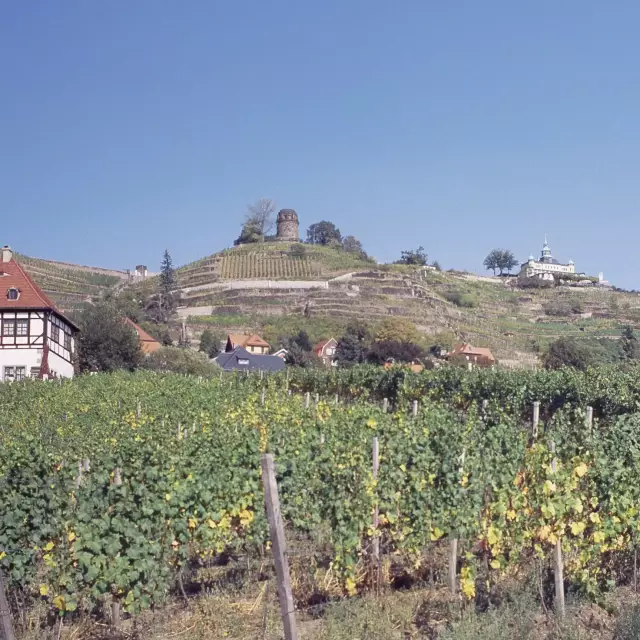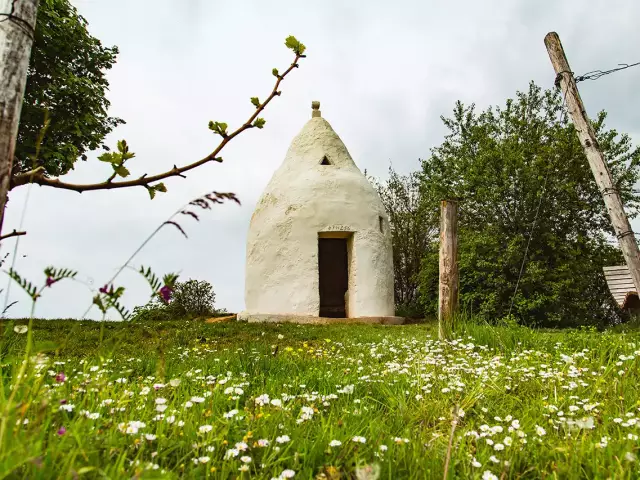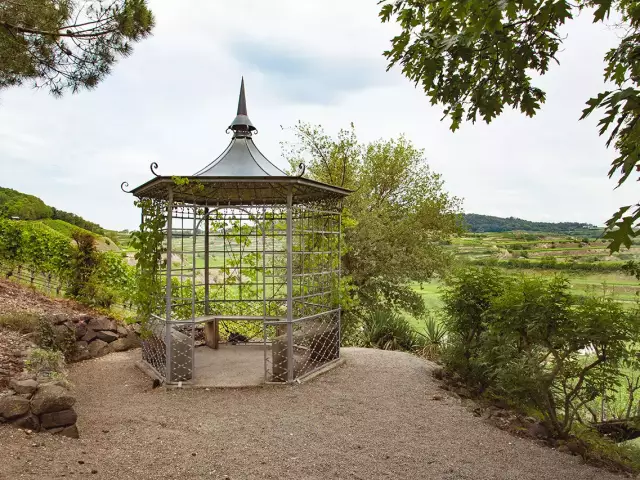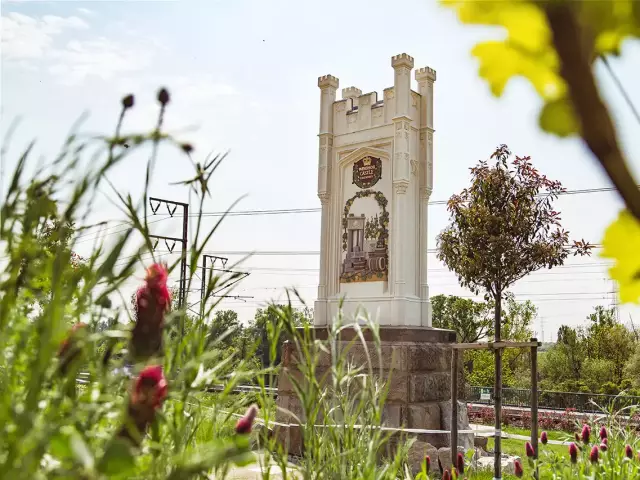Hoflößnitz

This can truly be called the cradle of Saxon viticulture. Here, on the Hoflößnitz estate, the Saxon electors partied during the wine harvest, the Sachsenkeule (elegant club-shaped bottle) was invented and a history of 600 years of viticultural tradition can be traced.
Already around the year 1271, viticulture is accounted for in the Lößnitz region. On May 8, 1401, Margrave William the One-Eyed of Saxony bought the wine press building as well as the land around it, paying an amount of 1660 Meißen groats. From then on, the house of Wettin controlled the hitherto scattered vineyards of the region for the following five centuries – up until 1889. The Estate, however, became the center of viticulture for the Saxon princes and electors and the home of courtly feasts.
The Estate's name, Hoflößnitz, was first noted in a historical document on January 14, 1622. In 1650, Elector Johann Georg I. had the small castle and the pavilion, built right next to the wine press building. His son Johann Georg II used to celebrate the wine harvest feast here every year. His court painter, Albert Eckhout from the Netherlands, adorned the banquet hall with a huge ceiling fresco, a masterpiece of art that features 80 Brazilian birds. The hall's wooden walls are also decorated lavishly with panel paintings.
In the 17th century, life on the estate evolved around the production of wine. This can be seen in the little Book of Viticulture which was written by the Electoral vineyard custodian and scribe Johann Paul Knohll in 1667 on the Hoflößnitz estate. The book contained a commentary on the Electoral Saxon Order of Vineyards from April 23, 1588. Knohll's booklet summarized the 24 established rules of work in the vineyards at that time, adding his own experiences. Up to the 19th century, it remained the standard book of viticulture for wine makers in Saxony. It was not only wine that was researched here, legends also tell of lavish feasts. Elector August the Strong (1677–1733) invited his hunting parties to the Hoflößnitz, organised dance feasts at which wine was liberally served and held raucous harvest festivals. Around this time, the mansion was built whose cellar held a tasting room for the prince, called the Kellerstube.
In 1843, the Hoflößnitz became a State Winery and stayed thus until the catastrophic phylloxera blight that led to the downfall of viticulture in the Lößnitz region in 1889. The tradition of viticulture was revived in 1911 when an institute for the grafting of the grapes was installed in the Hoflößnitz estate. In 1916, agricultural councilor Carl Pfeiffer became the institute's director and began a systematic replanting of the terraces with a new grafted vine, thus reactivating viticulture in Saxony. The grafting institute was turned into an Institute for Viticultural Development and Teaching in 1927. Pfeiffer also developed marketing strategies intended to raise awareness around Germany for the wines of the Elbe valley. This climaxed in 1931 with the invention of the 'Sachsenkeule' (Saxon Club) – a green wine bottle in an elegant 'club' shape, considered both then and now, to be a proud hallmark for Sachsen wines.
The long tradition of wine making and viticulture is carried on today by the Foundation of the Winery and Museum Hoflößnitz, which was founded in 1998. That same year, it also became the first estate in Saxony to achieve certification for ecological winemaking and it continues to apply those principles to its 8.5 hectares of vineyards. The former pleasure palace is now a museum for viticulture in the Elbe valley and for the former Electoral wine estate.




